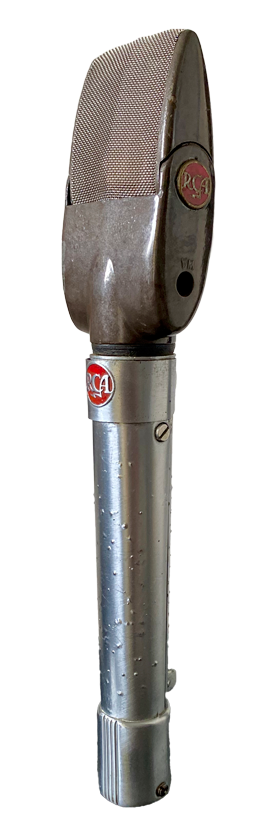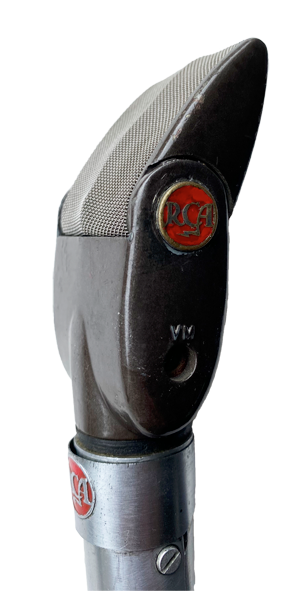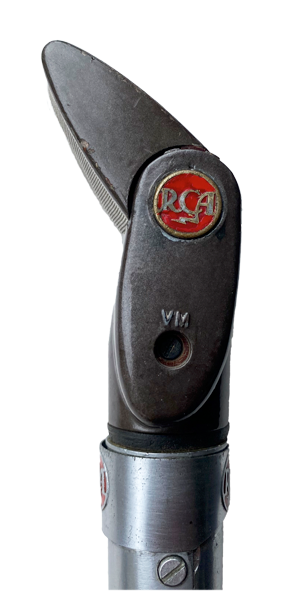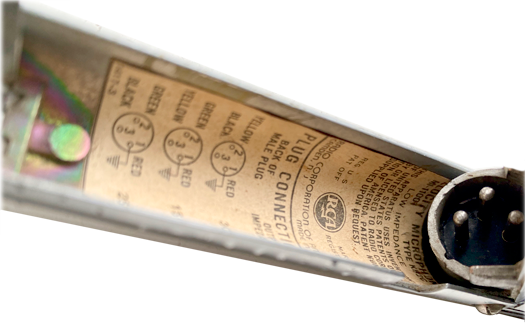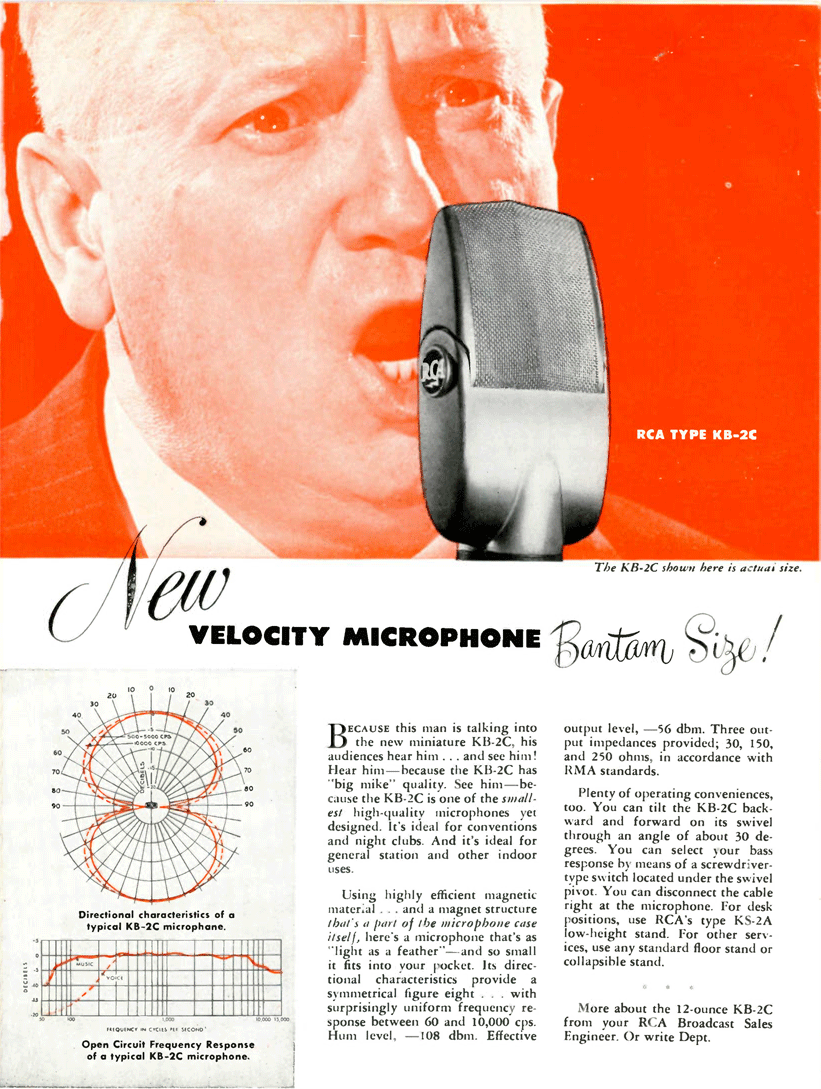|
Sales people at RCA must have been aware that their legendary ribbon microphones were far too large for modern times. Engineering simply had to figure out a way to minimize the size of their designs. The huge boxy 44BX and the hefty pill shaped 77s hid tv presenters from an audience that wanted to get a good look at those who addressed them.
Hence the more modest designs of the BK-4A Starmaker (MOTM December 2021) and the KB-2 'Bantam' series. Bantam usually means 'pertly combative', which is most certainly true for these little microphones, that can face almost any battle.
The KB-2A, from ca. 1947, was a professional microphone with the same output and big sound as the 44BX, and the same bidirectional recording pattern. By making use of new strong light weight magnetic materials and integrating these in the casing of the KB-2, the reduction in size was enabled. According to RCA, it was 'as small as a pack of cigarettes', which was true, as long as you disregard the 135 mm shaft, that hid the XL connector (XLR predecessor) and enabled hand held use to.
The top, containing the motor, could be swivelled 30 degrees front or back, it led to the nick-name 'the Paint brush' The bottom, which held the transformer, was rigid, impedance could be chosen between 50/150/250 Ohms, by changing connections in the shaft. There was a voice / music screwdriver switch at one side.
Although this miniature velocity microphone sounded like its bigger brother, the 44BX, frequency reach was more limited: 80-8000 Hz. It was succeeded quickly, in 1948, by the BK-2C, with a wider frequency range of 60-10.000 Hz. The KB-2B was a high impedance version, for less demanding circumstances.
The model was meant for tv, where it did not conceal the faces of singers and speakers. It was also widely used for broadcast. Since it weighed just 360 grams, it was ideal for portable use as well.
It is a really interesting vintage model, that sounds good on almost any source: vocals, brass, stringed instruments, snare, drum overheads or as an ambience mic. It has less dampening than a BX, so it is best to use it with a pop screen.
The ad for the KB-2C was pretty strange, it looks like the sales department of RCA had an off-day, I can't imagine why thy would use such an unattractive man for their promotion.
My copy of the KB-2C was faithfully restored by Stewart Tavener of Xaudia, and is ready for any job. I have used it with great results on acoustic guitar, snare and double-bass and I hope to use it on many more sources. Over 75 years after its introduction it still has a lot of life ahead.
Many more types feature in my book Witnesses of Words. More information about that can be found at www.witnessesofwords.com
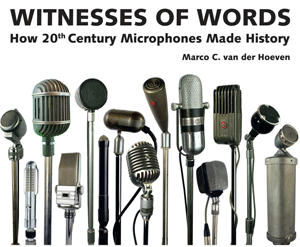
|
|
Top: the miniature RCA BK-2C Bantam
Below: sound, tilted back and forward, shaft with XL male connector and RCA BK-2C ad from 1950
|
|
|
|
|
|
|


 Video's
Video's Contact
Contact


